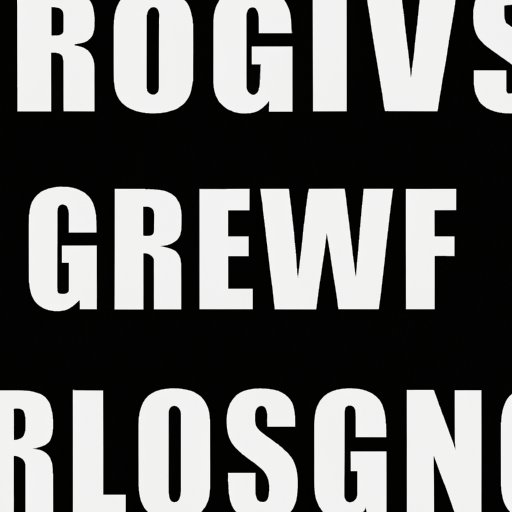Introduction
The Roaring 20s, also known as the Jazz Age, was a period of unprecedented economic, political, and social change in the United States. This era of optimism and exuberance, however, eventually came to a crashing halt with the onset of the Great Depression in 1929. The Great Depression was a severe economic crisis that lasted for more than a decade and had a lasting impact on the US economy. In this article, we will explore how the Roaring 20s lead to the Great Depression.

Analyzing the Causes of the Great Depression: Examining the Impact of the Roaring 20s
One of the most significant causes of the Great Depression was the stock market crash of 1929. Prior to the crash, the stock market experienced a massive surge in speculation and investment, which saw stocks prices skyrocket to unsustainable levels. On October 29, 1929, the stock market crashed, wiping out billions of dollars in wealth. This crash marked the beginning of the Great Depression and set off a chain reaction of economic decline.
The economic boom of the Roaring 20s was another factor that contributed to the Great Depression. During this time, there was a significant increase in consumer spending and production, which drove up prices and wages. This created an environment of over-speculation and over-investment, leading to an unsustainable level of debt. When the stock market crashed, the US economy was unable to recover from the shock, resulting in the Great Depression.
Government Policies in the Roaring 20s
Government policies during the Roaring 20s also played a role in the onset of the Great Depression. During this period, the federal government adopted a number of policies that favored business interests and weakened the power of labor unions. These policies encouraged businesses to invest in speculative ventures and created an environment of over-speculation and over-investment. When the stock market crashed, these policies made it difficult for the economy to recover, leading to the Great Depression.
Examples of government policies during the Roaring 20s include the Smoot-Hawley Tariff Act of 1930, which raised tariffs on imports; the Dawes Plan of 1924, which allowed Germany to borrow money to pay reparations; and the Federal Reserve System, which was designed to control the money supply and prevent inflation. All of these policies had a direct impact on the US economy and helped to create the conditions for the Great Depression.

Social Changes During the Roaring 20s
The social changes that occurred during the Roaring 20s also had an impact on the Great Depression. During this period, there was a shift away from traditional values and towards a more materialistic lifestyle. This new way of life encouraged people to spend more and save less, creating an environment of over-consumption and debt. When the stock market crashed, these debts could not be repaid, leading to economic decline.
Examples of social changes during the Roaring 20s include the rise of the “flapper” culture, which promoted a more liberated lifestyle for women; the growth of the automobile industry, which created new opportunities for travel; and the emergence of popular culture, which gave rise to new forms of entertainment. All of these changes had an impact on the US economy and helped to create the conditions for the Great Depression.

Consumerism and Materialism of the Roaring 20s
The consumerism and materialism of the Roaring 20s also played a role in contributing to the Great Depression. During this period, people were encouraged to buy more and save less, resulting in an environment of over-consumption. This over-consumption led to higher prices and more debt, which could not be repaid when the stock market crashed. As a result, the US economy was unable to recover from the shock, leading to the Great Depression.
Examples of consumerism and materialism during the Roaring 20s include the rise of advertising, which encouraged people to buy more; the emergence of installment plans, which made it easier to purchase goods on credit; and the growth of the luxury industry, which catered to the wealthy. All of these factors helped to create an environment of over-consumption and debt, which contributed to the Great Depression.
Conclusion
In conclusion, the Roaring 20s had a major impact on the onset of the Great Depression. The stock market crash of 1929, economic boom of the Roaring 20s, government policies, social changes, consumerism, and materialism all played a role in creating the conditions for the Great Depression. By examining these factors, it is clear that the Roaring 20s had a profound and lasting impact on the US economy.
Although the Roaring 20s was a time of great optimism and progress, it ultimately led to one of the worst economic crises in US history. The Great Depression had a devastating effect on the US economy and changed the course of history. It is important to remember the lessons of the past and to ensure that we do not repeat the same mistakes.
(Note: Is this article not meeting your expectations? Do you have knowledge or insights to share? Unlock new opportunities and expand your reach by joining our authors team. Click Registration to join us and share your expertise with our readers.)
